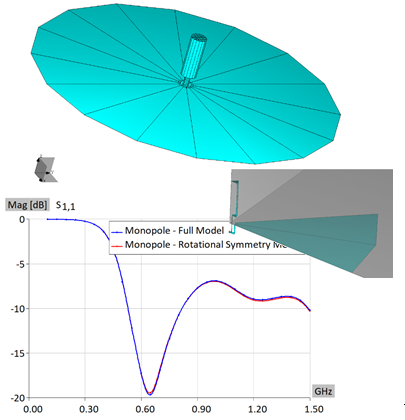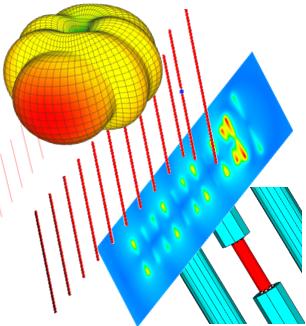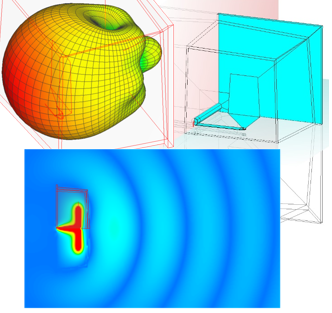Wideband Monopole Antenna Simulated with Rotational Symmetry Option
Two models of the wideband monopole antenna have been simulated using WIPL-D Pro Software. In particular, S-parameters and radiation pattern at 0.6 GHz of the monopole antenna were calculated and compared. Besides, some details regarding the monopole modelling and the particularities related to Rotational Symmetry setting are presented.
The first calculation being carried out without any simplifications applied, and the second calculation is performed with rotational symmetry applied through Rotational Symmetry option when the n-th part of the antenna structure is modeled. The comparison has confirmed that the simulations carried out using Rotational Symmetry option provide highly accurate results in much shorter time.
The modeling and the simulations were carried out using WIPL-D full wave 3D electromagnetic Method-of-Moments based software which applies Surface Integral Equations. The simulations are very efficient even when simulating on a laptop computer.




